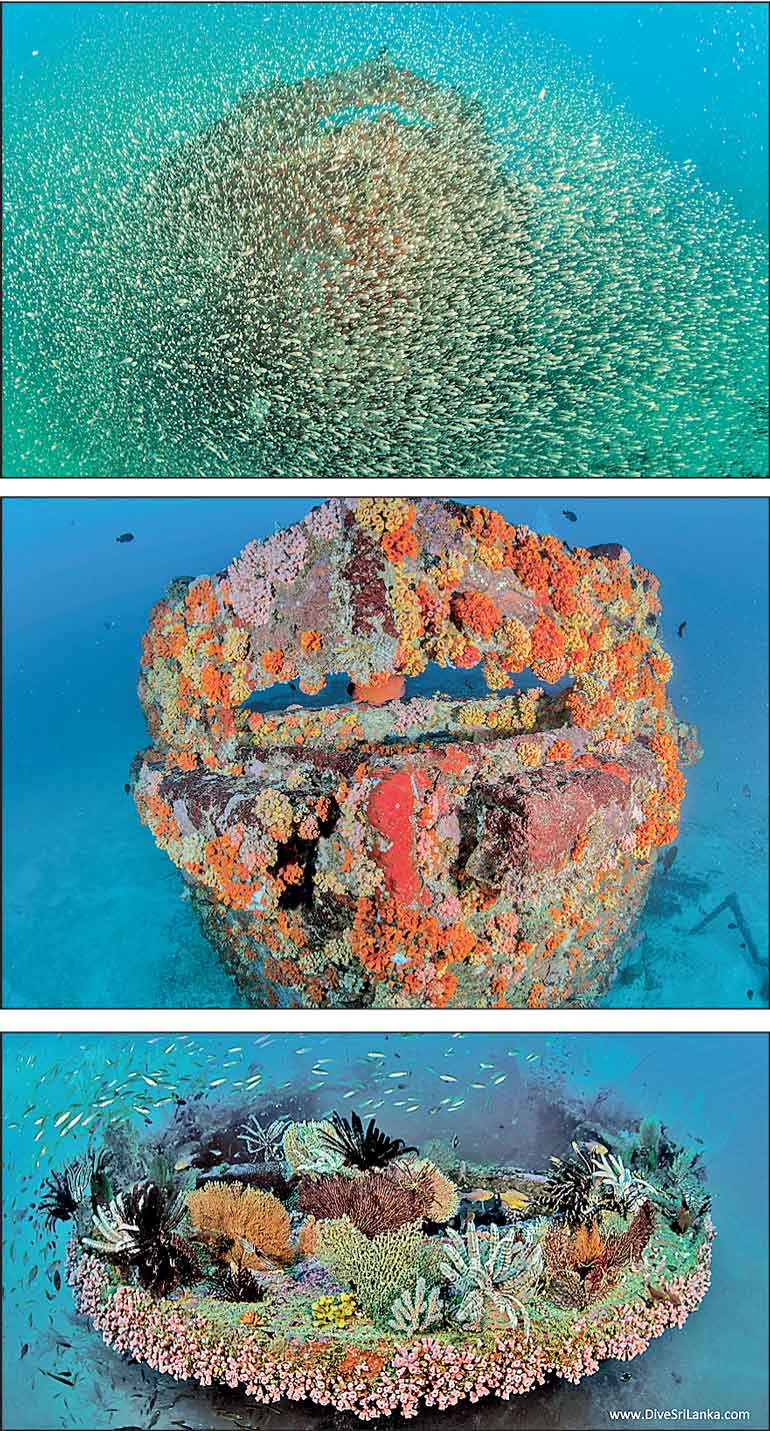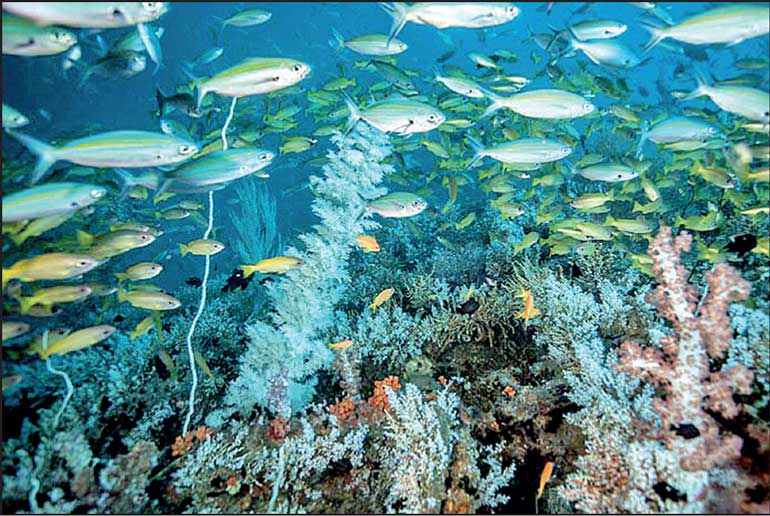Tuesday Dec 09, 2025
Tuesday Dec 09, 2025
Wednesday, 19 January 2022 00:00 - - {{hitsCtrl.values.hits}}


Battery barge

Wallet Wreck BioD - DJ

Taprobane East Wreck

Taprobane East Wreck 30m Colombo - 3
The Wildlife and Nature Protection Society (WNPS) will hold its monthly lecture on 20 January, putting a much-needed spotlight on shipwrecks in Sri Lanka.
Four specialists Arjan Rajasuriya, Rasika Mutukumarana, Dharshana Jayawardene and Chathurika Munasinghe will share their insights at the lecture titled ‘Shipwrecks: Archaeological Heritage, Biodiversity Hotspots & Magnets for Recreational Divers’. The hybrid event will be held at 6 p.m. at the Jasmine Hall, BMICH and simultaneously telecast on Zoom and FB live.
Rajasuriya is a Coral ecologist, IUCN Marine Program, formerly of NARA.
Central Cultural Fund, Galle Maritime Archaeological Unit Maritime Archaeologist Mutukumarana will focus on ‘Archaeological Heritage: The Ancient Shipwrecks’.
Jayawardene, who is a Technical Diver, Cave Diver and Underwater Explorer will focus on ‘Shipwrecks of The Age of Steam, including wartime wrecks: Tourist Magnets’.
Munasinghe, a Marine Biologist, and Lecturer, Department of Zoology, Faculty of Science, University of Peradeniya will speak on ‘Shipwrecks as Biodiversity Hotspots: Services to the Fishery Industry’.
WNPS said Sri Lanka has long been at the centre of ancient maritime routes, attracting explorers, traders and invaders for centuries. As with all of mankind’s adventures there are the inevitable misadventures – resulting in a myriad of shipwrecks dotted along the island’s seabed. They have inadvertently left us a legacy – an unrivalled and unique cultural treasure, lying in the depths of the ocean around Sri Lanka.
WNPS said these wrecks are part of Sri Lanka’s Maritime Heritage. They are an invaluable source of information to maritime archaeologists because they contain historical information about seafaring, warfare, and life during the period of the sinking. Sri Lanka has the largest concentration of shipwrecks, including wrecks from two World Wars, and over the years, a booming dive tourism industry has developed around these shipwrecks.
From a marine ecology perspective, shipwrecks are of immense value as they become artificial reefs providing a substrate for various sedentary invertebrates to settle on and proliferate and shelter for shoals of fish that take refuge in the sunken structures.
The WNPS is mandated to preserve and protect the country’s wildlife and nature, including marine habitats and their inhabitants. Its Marine Committee has been active in creating awareness of the marine environment among the Society’s members and the public for some months. Partnering divers and maritime archaeologists in creating awareness about these rather special underwater habitats is part of its program, WNPS added.
The monthly lecture of the WNPS is supported by the Nations Trust Bank. The lecture is open to both members and non-members and would be delivered in English and Sinhala. Entrance is free, and the WNPS requests the members to follow all health and safety requirements at BMICH.